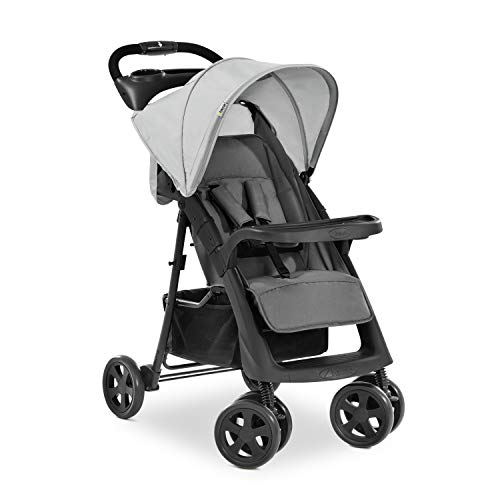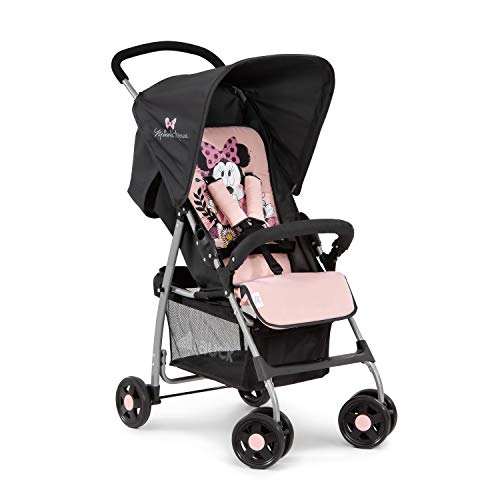Monitor Your Little One's Wellbeing With a parent facing pram (
click here now)
While your child is snuggled in a parent-facing pram, you can observe their wellbeing and comfort easily. This is particularly helpful on busy days.

University of Dundee study found that babies who were in buggies with faces were more playful, chatted twice as often and had a lower heart rate which are all signs of less stress.
Peace of Mind
A parent facing pram is a great method to ensure that your baby's safety is secure. The seat is secured with a five-point harness, which will protect your baby from accidents.
A pram of good quality has an ample basket that can hold all the baby's essentials so that you don't need to think about where all the other things will go. Having the right accessories is crucial to help your little one stay comfortable during their travels for example, a footmuff (check that they're compatible with the 5-point harness) and a liner for the pram to guard against the sun or rain.
When you are choosing a pushchair for your new addition, it's essential to test-drive it and find the right model for your child and you. Look for models with moveable wheels that can be swiveled to make it easier for you to maneuver and adjustable handlebars to ensure everyone in the family can use it.
If you're worried that your baby might falling out of their stroller and slipping out of the seat, a safety harness is an essential item for every parent. It will prevent your child from leaving the seat and it's also an excellent way to keep them close in case in the event of an emergency.
Some experts advise waiting until the baby is 6 months old older to use a stroller that faces the front, but this depends on the baby's developmental milestones. Some babies are ready for the world earlier, especially when their curiosity and desire to discover the world is high.
Parents may be worried that their newborn will develop a flat spot in the back of their head while sitting in a parent facing pram however, this isn't something to be concerned about. Auckland osteopath Julia Griffiths says that babies should spend more time lying on their backs to build up their skull muscles. This can be achieved through a parent-facing pram and controlled tummytime.
Enhanced Bonding
It is important to consider the direction your baby faces when they are out and about, regardless of whether you are using a
folding pram or a pushchair. It might appear to be a minor thing but it can have a huge impact on your baby's development and interaction with you while out and out and about.
A new study has discovered that babies who are in buggies facing away are less likely to engage in conversation or laugh with their parents than those who use a parent facing pushchair. The study included 2,722 children with their mothers from 60 cities as well as another study that focused on 20 mothers and their babies. The findings reveal that babies who sit in a front-facing buggy with their parents are twice as likely to be smiling at each other as compared to those who sit in a buggy that is away from the parents. This is because if your baby can be able to interact with you and see your face, they are more engaged.
Face-to-face interactions between babies promotes attachment and develops. It also enables you to point things out to them like buses and playgrounds, or flowers that they might not have noticed otherwise.
It is important to remember that your baby must be able sit up on their own before you can convert it into a pushchair facing towards the forward. Children younger than this age may be trouble adjusting to the change, and they may be more stressed when they have to shift from a sitting to standing position.
A health professional can examine your child to ensure that they are well-prepared for the transition. They can check if your child's bones and muscles are strong enough to handle the change, as well as whether they've developed any sensitive areas. This test is particularly important if you've been using your pushchair prior to your baby's birth, or if you have previously used an away-facing pram. A medical professional will be able to advise you on the best time for your child to transition into a forward-facing pushchair.
Better Eye Contact
One of the most wonderful advantages of having a parent facing pram is the ability to make eye contact with your child. This is particularly crucial for newborns and infants who are still learning to interact with the world. It's also an opportunity to talk to them and play with them, which helps to teach them the names of the things they see and improves their development in language.
According to studies, babies who face their parents are more likely to smile and converse with them as opposed to those who are unable to see them. This is due to them absorbing the sounds and visuals of their surroundings which aids them in understanding what's happening around them. Eye contact helps parents and their children to communicate. This helps to soothe the baby and allows him to calm down.
Bring a
travel pushchair toy with you for your child to play with while they are in the pushchair. These toys are ideal for stimulating the mind and bringing smiles to children. They can also help your baby recognize your voice, which is crucial to their development as a cognitive child.
Babies are always exploring the world and their surroundings. However, as they become older and more active, they might be able to sit forward in their pushchair. If this is the case, then it's worth thinking about purchasing a front-facing pram or stroller from our range.
A few months after the transition to a front-facing pushchair, it's recommended that you add a footmuff to keep your baby warm and comfortable. Choose a style that can be slid on and removed as needed, and is compatible with your baby's car seat or crib. You can also buy a unique travel item that helps your baby recognize their pram when they are out and out and about.
One of the best ways to ensure that your baby's pushing posture is correct and that they're comfortable is to check their head and neck alignment frequently. If the front of the pushchair tilts forward, their head and neck are being pushed against it. This isn't safe.
Easier Monitoring
The reassuring sight of your baby's face in a parent facing pram lets you monitor them better. It is easy to tell if they are crying, asleep or cold, or if they wear a hat over their head or one of their socks has fallen off. You can also converse with a baby quickly when they are standing in the front of you. They can see you and hear your voice.
This is particularly important for toddlers and babies with speech and language delays because it stimulates their brains. It's also a great way to teach your child about the world, like when you talk about flowers or busses. It's also a great opportunity for you to sing to them too, especially if they like singing!
Many studies have shown that babies who are facing their parents love to talk with them. For instance, this study by Dundee University found that babies chatted twice as much when in a forward-facing
pushchair cheap as in a rear-facing model. The same study also revealed that babies whose faces were not visible to their parents had heart rates that fluctuated more, suggesting they were stressed and anxious. Heart rates were more calm and more consistent in babies who had faces that they could see.
However it doesn't mean all children should be changed from a rear-facing stroller to a front-facing model right from the start. It is better to wait until your child is six months old. This is the age when their muscles and bones are fully developed enough to ensure that the transition is safe for them.
